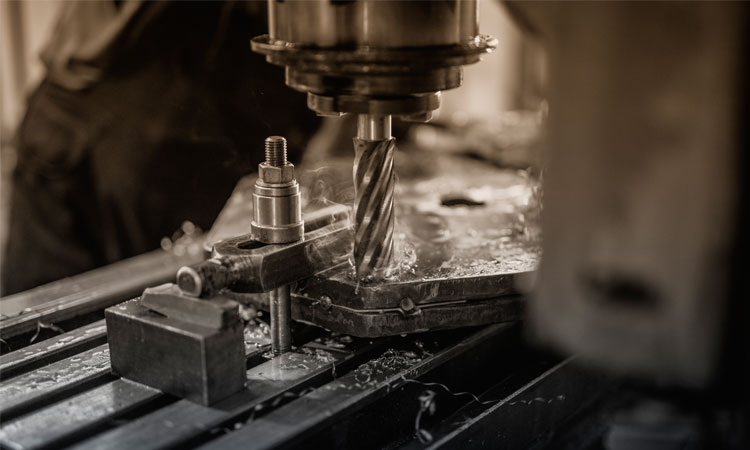The global die and mould tooling industry is undergoing a dramatic transformation, powered by advanced technologies, diversified sectoral demand, and regional industrial expansion. As of 2024–25, the global tooling market stands at an estimated USD 273.89 billion and is forecasted to grow to USD 531.62 billion by 2034. This significant surge—driven by a projected compound annual growth rate (CAGR) of 6.86%—underscores the mounting need for precision-engineered components across industries such as automotive, aerospace, electronics, and consumer goods.
Market Overview: Engineering the Backbone of Manufacturing
At the heart of modern manufacturing lies the tooling industry, which involves the design and production of essential components such as dies, jigs, fixtures, and moulds. These tools form the bedrock of mass production across countless applications. As product complexity increases and the market demands higher quality and durability, manufacturers are shifting toward advanced tooling solutions.
Technologies like Computer Numerical Control (CNC) machining and additive manufacturing (3D printing) are now redefining tooling processes. These innovations offer improved speed, accuracy, and efficiency, while exotic materials—such as composites and high-performance alloys—provide greater strength and longevity for mould and die applications. Collectively, these shifts are propelling the tooling industry toward a future built on precision, adaptability, and innovation.
Regional Growth Trends: A Global View
Europe: Market Leader Through Engineering Excellence
Europe currently holds the lion’s share of the global tooling market, thanks to its strong legacy in industrial engineering, early adoption of emerging technologies, and a mature manufacturing ecosystem. Nations like Germany, France, and Italy continue to dominate through a mix of technical know-how, automation integration, and strong automotive and aerospace sectors. These countries have also been instrumental in incorporating sustainability into manufacturing, boosting their global competitiveness.
North America: Fastest Growing Region
North America is witnessing robust growth, with the United States spearheading the regional expansion. Valued at USD 12.23 billion in 2024, the U.S. tooling market is projected to reach USD 12.66 billion by 2025, and continue to grow at a CAGR of 5.2% through 2033. This growth is fueled by the resurgence of domestic manufacturing, investments in advanced production technologies, and government initiatives promoting local sourcing and technological self-reliance.
Asia-Pacific: The Emerging Manufacturing Powerhouse
Asia-Pacific, particularly China and India, is rapidly becoming a dominant force in the tooling market. Driven by rapid industrialization, vast infrastructure development, and expanding manufacturing hubs, the region presents enormous opportunities for tooling manufacturers. Governments across Asia are aggressively investing in automation, smart manufacturing, and digital infrastructure, accelerating the demand for high-precision tooling. As labor costs gradually increase, there is a growing push toward quality-driven, automated solutions that match global standards.
Key Industry Trends Shaping the Future
- Additive Manufacturing (3D Printing):
Once considered experimental, 3D printing is now reshaping die and mould manufacturing. It allows for the production of intricate geometries that were previously unachievable through conventional machining. Additionally, it reduces waste, shortens lead times, and promotes environmentally friendly production—making it a sustainable choice for high-performance tooling. - Automation and Robotics:
The integration of automated systems and robotics into die and mould production enhances repeatability, reduces the risk of error, and drastically increases throughput. With automotive and electronics sectors demanding higher volumes and tighter tolerances, automation has become indispensable. Tool rooms and manufacturing floors are increasingly equipped with robotic arms, automated inspection systems, and smart CNCs. - Advanced Materials for Greater Performance:
The tooling industry is now embracing materials such as titanium alloys, nickel-based superalloys, and carbon composites. These materials offer improved wear resistance, thermal conductivity, and durability—particularly crucial in sectors like aerospace and defense, where tool longevity and precision are non-negotiable. - Sustainability as a Strategic Imperative:
As environmental concerns take center stage globally, die and mould manufacturers are pivoting toward greener practices. From using recyclable materials to adopting energy-efficient machinery and closed-loop production systems, sustainability is no longer optional—it is a competitive advantage. Moreover, clients are increasingly prioritizing suppliers with carbon-neutral operations and eco-friendly certifications.
Challenges and Opportunities
Despite strong growth projections, the die and mould tooling industry faces several pressing challenges. Foremost among them is the rising cost of advanced tooling technologies, which can deter smaller players from adopting the latest innovations. Additionally, there is a notable shortage of skilled labor, especially in precision engineering and CNC operation—gaps that could stymie production capacity.
Another concern is global competition, particularly from low-cost manufacturing economies that exert pricing pressure on quality-driven suppliers. However, these hurdles also create opportunities. Companies that invest in workforce upskilling, automation, and R&D are likely to outperform competitors. Strategic partnerships, digital transformation, and government-backed incentives for domestic production further open pathways to sustainable growth.
Precision-Driven Growth in the Decade Ahead
The die and mould tooling sector is at a defining crossroads. As industries transition toward smarter, faster, and cleaner production methods, the tooling industry must evolve in tandem. The convergence of digital technologies, materials science, and global supply chain restructuring is creating a fertile environment for innovation and expansion.
Looking ahead, the industry’s success will depend on how quickly it can adapt to technological change, invest in talent, and scale operations sustainably. From automotive gigafactories to aerospace components and medical device tooling, the demand for high-precision, robust, and eco-conscious tools is set to accelerate.
In this new era of manufacturing, the companies that lead will not only be those that produce the best tools, but also those that reshape the way the world makes things. The die and mould tooling industry is no longer just about shaping metal—it’s about shaping the future.
Image courtesy : Design by Freepik


